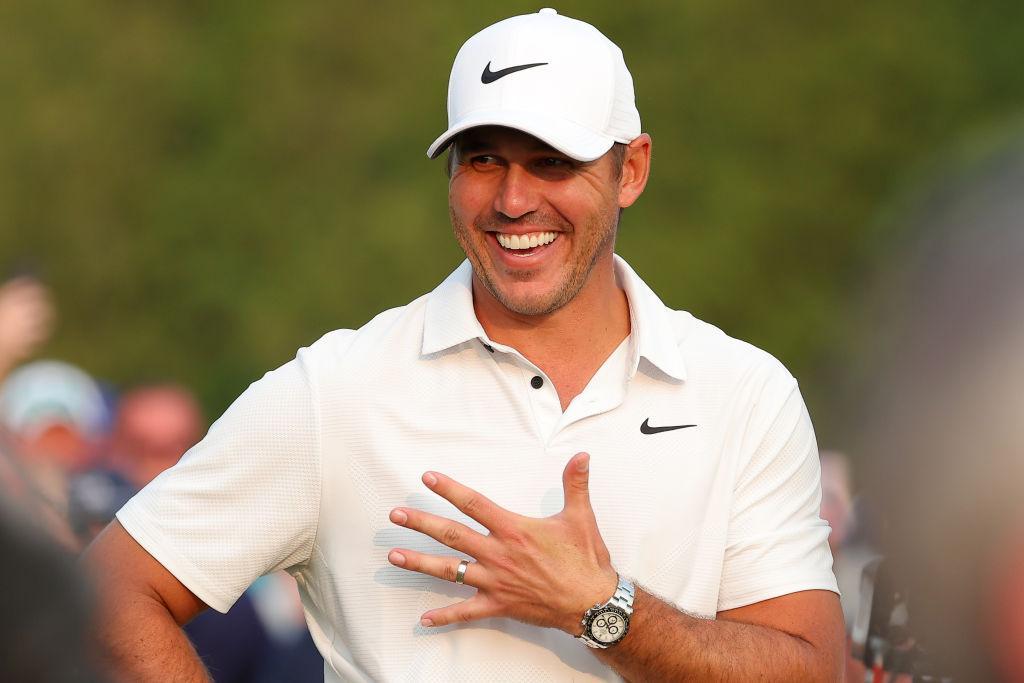Unveiling the Strategic Brilliance of Brooks Koepka’s Golf Instruction
Brooks Koepka, a prominent figure in the world of golf, has garnered attention not just for his athletic prowess but also for his strategic approach to the game. This analysis explores the intellectual frameworks that underpin Koepka’s teaching methods, shedding light on his strategic insights, adaptability, and calculated risk management. By dissecting the elements of his swing mechanics, course strategy, decision-making processes, and mental resilience, this study aims to provide valuable lessons for golfers aspiring to enhance their skills.
Mastery in Mechanics: A Deep Dive into Koepka’s Swing Techniques
Koepka’s excellence on the golf course is rooted in both strategic insight and technical precision. His swing mechanics reflect years of dedicated practice and refinement.
Key Components of Koepka’s Swing
At the core of Koepka’s swing is a strong grip paired with a stable stance. His hands maintain an overlapping grip that enhances control while generating power. A wide stance ensures stability and facilitates optimal energy transfer during swings.
Koepka’s backswing features an assertive hip rotation followed by a smooth transition into his downswing. As he shifts weight onto his back foot during ascent, he builds momentum that culminates in powerful impact with precision timing.
| Attribute | Description |
|———–|————-|
| Grip | Overlapping grip providing enhanced control |
| Stance | Wide base ensuring stability |
| Backswing | Assertive hip movement leading to fluid transition |
| Downswing | Timed release generating significant power |
Cognitive Skills: Course Analysis and Adaptability
A critical aspect of Brooks Koepka’s success lies in his ability to analyze courses effectively and adapt strategies accordingly. His keen observational skills allow him to assess terrain features meticulously while anticipating potential hazards.
Strategic Course Management
- Green Analysis: He studies green contours meticulously—understanding slopes helps him select appropriate clubs for effective navigation.
- Hazard Assessment: Identifying obstacles like bunkers or water hazards enables him to make informed decisions about shot execution.
- Wind Evaluation: By interpreting wind patterns accurately, he adjusts club selection and swing techniques accordingly.
Situational Strategies Table
| Situation | Strategy Employed |
|——————————-|——————————————————-|
| Elevated tee shot | Opts for higher loft clubs for desired trajectory |
| Dogleg hole | Plans shots around bends considering distance |
| Water hazard near green | Modifies club choice ensuring adequate carry distance |
Strategic Excellence: Risk Management & Decision-Making
Koepka excels at evaluating risks versus rewards—a skill crucial for maximizing scoring opportunities while minimizing potential setbacks. His comprehensive understanding of course conditions informs every decision regarding club selection and shot execution.
Dynamic Decision-Making Framework
His adaptability shines through as he navigates changing conditions seamlessly:
- Risk Tolerance: He balances aggressive play with caution by weighing potential outcomes carefully.
- Situational Awareness: Continuous assessment allows him to modify strategies based on real-time observations.
- Shot Precision: Informed choices lead to consistent performance marked by accuracy in execution.
Risk Assessment Overview Table
| Category | Indicators | Performance Impact |
|---|---|---|
| Risk Tolerance | – Calculated risk-taking – Evaluating rewards vs consequences |
– Optimal play choices – Enhanced winning chances |
| Situational Awareness | – Detailed assessments – Adapting strategies dynamically |
– Improved navigation - Fewer penalties incurred |
| Shot Execution | – Club selection based on analysis – Focused accuracy during shots |
– Consistent results – Reduced errors overall |
Mental Resilience: The Psychological Edge
The psychological aspect plays a pivotal role in Brooks Koepka’s success as well; maintaining composure under pressure distinguishes elite players from their peers. In lessons shared with students:
Building Mental Strength
Koepka emphasizes visualization techniques alongside positive self-talk as essential tools:
- Visualization Practices: Imagining successful outcomes fosters confidence while alleviating anxiety before crucial shots.
- Positive Self-Talk: Encouraging focus on strengths rather than past mistakes cultivates resilience against setbacks.
- Resilience Training: Accepting challenges as growth opportunities reinforces determination amidst adversity—an invaluable trait among top competitors.
Pathway Towards Excellence: Recommendations Inspired by Koepka
Brooks Koepka’s methodical approach offers actionable insights applicable across all skill levels:
- ### Embrace Adaptability
Recognize that each round presents unique challenges; adjust your strategy according to environmental factors such as wind or terrain variations—just like Koepka does!
- ### Assess Risks Wisely
Develop an eye for discerning when bold moves are warranted versus when caution should prevail; learn from how he evaluates each situation critically before making decisions about club choice or shot placement!
- ### Cultivate a Champion Mindset
Foster unwavering belief coupled with perseverance through difficulties! Understand setbacks are part-and-parcel within sports—and use them constructively towards improvement!
this detailed examination reveals not only Brooks Koepka’s mastery over technical aspects but also highlights cognitive strategies integral toward achieving greatness within competitive golfing realms! Aspiring golfers can glean profound wisdom from these insights—ultimately enhancing their own journeys toward excellence on-course!

Unlocking the Secrets of Brooks Koepka: A Deep Dive into His Strategic Golf Mastery
Introduction to Strategic Golf Mastery
Brooks Koepka is known for his formidable presence on the golf course. His ability to excel under pressure and tackle challenging courses sets him apart in the world of professional golf. This article digs deep into the strategic elements that contribute to his success, offering insights for aspiring golfers eager to elevate their game.
The Mental Game: Koepka’s Psychological Edge
Resilience and Focus
One key aspect of Brooks Koepka’s game is his mental toughness. He demonstrates resilience in high-pressure situations, which helps him maintain focus and execute his strategies effectively. Here are a few strategies Koepka employs to enhance his mental game:
- Visualization Techniques: Imagining successful shots and scenarios helps Koepka prepare mentally for the challenges ahead.
- Mindfulness Practices: Techniques such as deep breathing and positive affirmations keep distractions at bay, allowing him to concentrate fully on each shot.
Handling Pressure
Koepka thrives in major tournaments, showcasing his ability to manage pressure. The following strategies illustrate how he navigates high-stakes situations:
- Staying in the Moment: Instead of dwelling on past mistakes, Koepka focuses on each shot one at a time, which reduces anxiety and boosts confidence.
- Routine Development: Establishing a consistent pre-shot routine helps him maintain calmness, allowing for better performance under pressure.
Course Management: Strategic Decision Making
Analyzing Course Conditions
Brooks Koepka’s ability to adapt his strategy based on course conditions is vital to his success. Here’s how he approaches course management:
- Assessing Weather Conditions: Koepka closely monitors wind patterns and precipitation, adjusting club selections and shot strategies accordingly.
- Understanding Course Layout: He studies the layout of the course meticulously to identify key risk areas and opportunities.
Risk Assessment
A fundamental aspect of Koepka’s game is intelligent risk-taking. He employs a strategic approach that involves:
- Evaluating Risk vs. Reward: Koepka carefully considers the potential outcomes of aggressive shots versus conservative play.
- Knowing When to Lay Up: Instead of attempting a risky shot, he often opts to lay up in conditions where the risk outweighs the potential reward.
Key Strategies for Success
Shot Selection
Koepka’s approach to shot selection is deliberate and calculated. Here are a few elements he focuses on:
- Club Choice: Based on distance, conditions, and obstacles, Koepka selects clubs that maximize his chances of success.
- Targeting: He identifies clear targets and visualizes his shot trajectory to improve accuracy.
Short Game Mastery
A significant portion of scoring takes place around the greens. Koepka’s short game strategies include:
- Chipping and Pitching Techniques: Mastering different lies and slopes allows him to execute precise shots.
- Putting Fundamentals: Koepka emphasizes a consistent putting stroke, allowing him to navigate various green speeds and slopes.
Practice Regimen
To maintain his edge, Koepka follows a rigorous practice routine:
- Targeted Drills: Focusing on specific areas of improvement, such as long drives or short putts.
- On-Course Simulations: Practice rounds that mimic tournament conditions help him prepare mentally and physically.
Case Studies: Koepka in Action
2019 PGA Championship
One of Koepka’s most memorable performances occurred at the 2019 PGA Championship. His strategic choices led him to victory. Key factors included:
- Opening Round: Koepka started strong, demonstrating his superior driving accuracy and iron play, setting the tone for the tournament.
- Weekend Strategy: He effectively managed his lead, opting for conservative play when necessary while still seizing scoring opportunities.
2020 U.S. Open
At the 2020 U.S. Open, Koepka showcased his adaptability. Amid challenging conditions, his strategic prowess shone through:
- Adjusting to Tough Pin Positions: Koepka showed remarkable control, adapting his shots effectively to navigate tricky pins.
- Strategic Scheduling: Understanding course conditions, he managed his playtime, strategically choosing when to practice.
Practical Tips for Aspiring Golfers
Enhancing Your Mental Game
- Develop a Pre-Shot Routine: Establish a calming pre-shot routine to promote focus.
- Practice Visualization: Regularly visualize successful shots to enhance confidence.
Mastering Course Management
- Scout Courses: Take time to study course layouts and conditions before play.
- Practice Risk Assessment: In practice rounds, evaluate the risks of aggressive shots versus conservative plays.
Short Game Improvement
- Regular Putting Drills: Spend time daily on putting practice to enhance your short game.
- Experiment with Chips: Try various chipping techniques to find what works best for your style.
Effective Practice Routines
- Segment Your Practice: Focus on different aspects of your game during each practice session.
- Use Course Simulations: Regularly play practice rounds under tournament-like conditions to improve mental resilience.
Conclusion
Brooks Koepka’s strategic golf mastery encompasses mental fortitude, tactical course management, and exceptional shot execution. By analyzing his techniques and strategies, aspiring golfers can uncover valuable insights to elevate their own games. With a focus on resilience, careful risk assessment, and continuous practice, embracing Koepka’s principles could lead to significant improvements on the golf course.




